Introduction
Zoning and land use regulations play a crucial role in shaping the residential character of urban landscapes. These guidelines not only facilitate orderly development but also embody a community's vision for sustainability and efficiency. However, the impact of these regulations on housing accessibility and affordability cannot be ignored.
For instance, minimum lot size requirements in cities like Dallas directly affect the financial aspects of both buyers and homeowners. Furthermore, the historical context of zoning reveals a legacy of exclusionary practices, particularly along racial lines. Recent zoning reforms in Minneapolis, driven by advocacy for racial justice and environmental concerns, demonstrate a shift toward inclusivity and affordability.
This article explores the importance of residential land use regulations and their implications, examining case studies from Nanjing, China, and discussing the factors influencing these regulations. It also delves into the impact of employment and services on land use policies and the positive and negative associations of various industries with residential land use. The article highlights the spatial and temporal heterogeneity of land use regulations, the methodology used to study their effects, and the findings and implications for policymakers.
Finally, future research directions are suggested to refine land use regulations in ways that foster sustainable, equitable, and thriving communities.
Background: Importance of Residential Land Use Regulations
Zoning and land use regulations are pivotal in shaping the residential character of urban landscapes. These guidelines are not only about orderly development but also embody a community's vision for sustainability and efficiency. With minimum lot sizes being a common regulatory tool, these statutes have a profound influence on the accessibility and affordability of housing.
For example, in Dallas, the prevalent minimum lot size of 7,500 square feet directly impacts both buyers and homeowners financially.
Moreover, the historical context of zoning reveals a legacy of exclusionary practices, particularly along racial lines. The journey from 'whiteness as property' to the 'Whiteness of property'—codified through the right to exclude—echoes the discriminatory backdrop of urban planning. This history is exemplified by landmark cases from Plessy v. Ferguson to Shelley v. Kraemer, illustrating the intersection of race and land use.
Recent zoning reforms, like those in Minneapolis, demonstrate a shift toward inclusivity and affordability. These changes, driven by advocacy for racial justice and environmental concerns, show a growing recognition of the impact of land use regulations on building and housing prices. The reform's preliminary effects suggest a potential path for other cities grappling with similar issues.
The Provincial Planning Statement (PPS) 2024 of Ontario provides a contemporary example of strategic land use planning. It outlines provincial policies to guide municipalities in creating housing, making land available for development, and ensuring infrastructure readiness, all while balancing environmental conservation and hazard mitigation.
The complexity of regulations, however, often leads to a 'black box' of outcomes, making it challenging to measure and understand their direct effects on housing prices. As research continues, the correlation between regulatory stringency and housing costs becomes increasingly apparent, urging policymakers and urban planners to navigate these regulations with transparency and attentiveness to the diverse needs of communities.
Case Study: Nanjing, China
A comprehensive analysis of land use regulations in Nanjing, China, provides a revealing case study for understanding the implications of such policies on urban development. Nanjing, experiencing a boom in housing demand due to its rapid growth, serves as an exemplary model for scrutinizing the relationship between land use regulations and key urban indices such as property prices, housing affordability, and the overall well-being of its citizens.
Through meticulous research, it's been observed that the spatial structure and pattern characteristics of urban land use play a pivotal role in molding the city's fabric. Studies leveraging remote sensing data and spatial measurement methods have shed light on the urban land expansion and evolution of urban functions, focusing on the significance of mixed-use development to counteract the challenges of congestion, pollution, and vitality loss in metropolitan areas. The concept of mixed-use development has emerged as a response to the strict functional zoning of the past, advocating for the integration and diversification of urban spaces.
Moreover, the application of innovative city pilot policies in Nanjing has led to enhanced innovation and economic resilience, as observed in cities with higher administrative levels on the east coast. These policies have been instrumental in attracting talent and boosting innovation outcomes, thereby fortifying the city's economic fabric. Nevertheless, the differentiation in response to these policies among various firms, with state-owned enterprises showing a more pronounced inclination to innovate, highlights the nuanced impact of land use regulations on the corporate sector.
Additionally, the challenge of integrating electric vehicle infrastructure into existing urban communities has come to the forefront. With the rising number of electric bicycles and associated safety concerns, such as the increased incidence of fires, the need for comprehensive planning that includes electric vehicle parking and charging facilities is evident. This underscores the importance of considering the multifaceted effects of land use policies and the evolving needs of urban populations.
In conclusion, the case of Nanjing not only offers insights into the direct outcomes of land use regulations but also underscores the broader implications for urban quality of life and sustainability. The ongoing evolution of urban spaces demands a dynamic approach to land use planning that can accommodate the changing needs of residents and ensure the harmonious development of cities.
Factors Influencing Residential Land Use Regulations
The formulation and execution of residential land use regulations are multifaceted endeavors shaped by a myriad of considerations. These considerations range from the local demographics and economic climate to environmental sensitivities, transportation frameworks, and the collective preferences of the community. The intricate nature of these factors necessitates a nuanced approach to crafting regulations that resonate with the unique fabric and demands of each locale.
By integrating these elements thoughtfully, policymakers can forge a pathway toward sustainable growth, safeguarding the essence of the community, and adequately fulfilling the residential needs of its inhabitants.
In the context of land-use regulation, one cannot overlook the profound impact of minimum lot size mandates, which stand as some of the most pervasive and consequential statutes across the United States. As highlighted by a co-director of the Urbanity Project at the Mercatus Center, these regulations impose significant financial burdens on both prospective homeowners and those already established in their residences. For instance, Dallas's predominant minimum lot size of 7,500 square feet exemplifies this widespread influence.
The stakes of land use regulation also extend to the realm of climate action. Urban sprawl, often neglected in climate discourse, is a substantial contributor to greenhouse gas emissions, accounting for approximately one-third of the total. This sprawl exacerbates travel distances, fosters car reliance, and perpetuates inefficiencies in the built environment.
Conversely, the promotion of compact, mixed-use developments could serve as a potent climate action mechanism, potentially addressing the shortage of 4 million homes due to historical under building and accommodating ongoing growth demands. Such development models promise reduced travel, enhanced health outcomes, increased housing affordability, and more sustainable consumption of resources.
Moreover, the process of urban planning is increasingly recognized as an issue transcending local boundaries, with federal and provincial policies playing a pivotal role in housing market dynamics. The initiation of new housing projects typically begins with development applications seeking rezonings, a negotiation process that dictates the scale and variety of land uses for future developments.
Recent news also sheds light on the need for reform in land use policy. Notably, a draft National Policy Statement on Natural Hazard Decision-making in New Zealand proposes that councils evaluate natural hazard risks when making planning decisions, prohibiting new developments in high-risk areas unless risks are mitigated to a tolerable level. Similarly, legislation in California seeks to expedite the construction of a student housing project by amending state environmental law to disregard noise pollution from future residents.
Reflecting on the historical context, as explained by Harvard Law's Molly Brady, before zoning, control over land use was exerted through the law of nuisance and covenants, such as deed restrictions. However, the patchwork of development resulting from these private agreements necessitated the emergence of city planning, an effort to create orderly, healthful, and aesthetically pleasing urban environments.
As the conversation on land use policy continues to evolve, it is clear that a thorough understanding of these multifaceted factors is indispensable for the enactment of effective and responsive regulations that align with the aspirations and challenges of our communities.
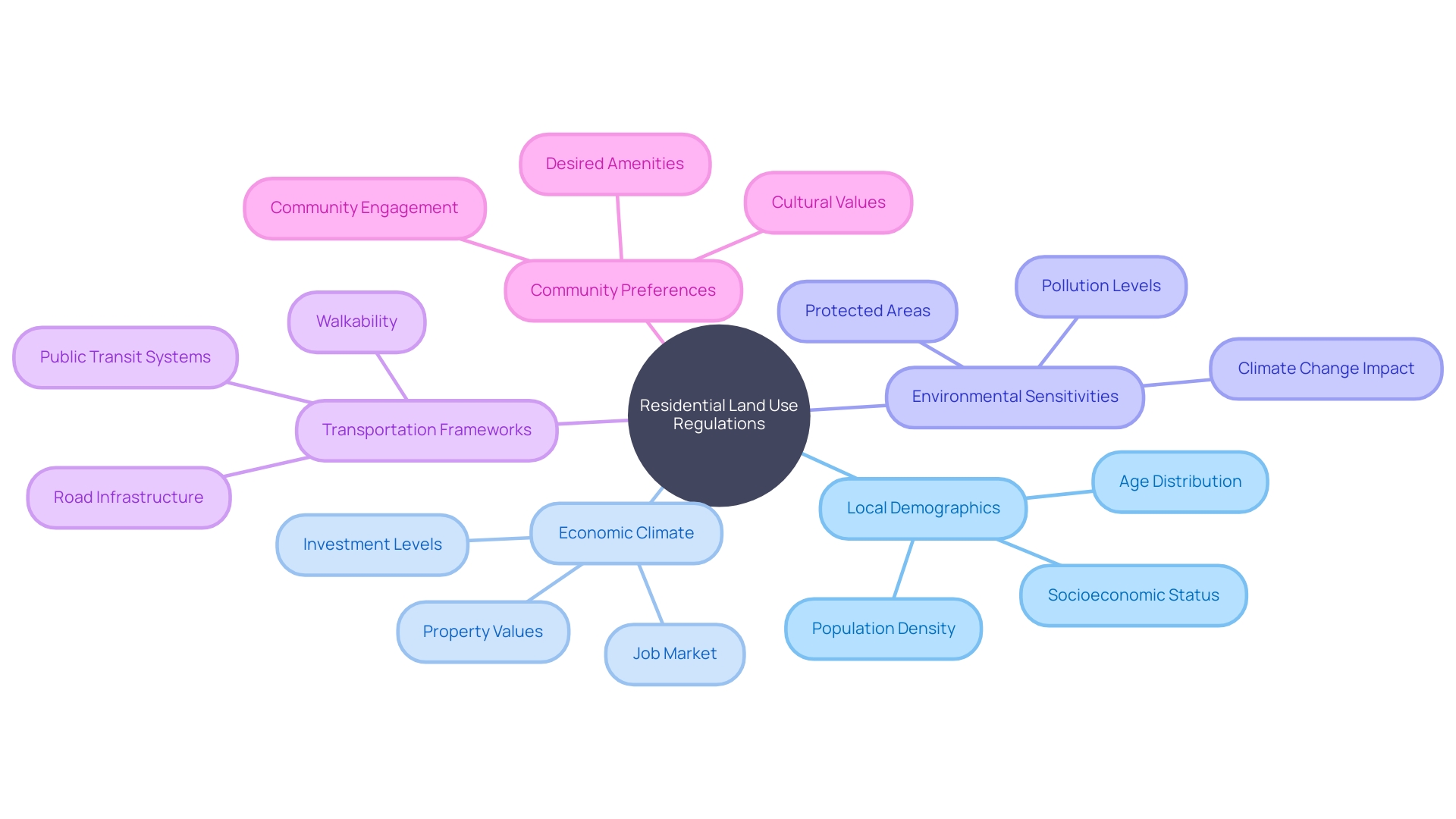
Impact of Employment and Services on Residential Land Use Regulations
The intricate relationship between job availability, essential services, and residential land use policies profoundly influences urban environments. In regions where employment is robust and services are readily accessible, property values soar alongside the demand for housing. This phenomenon often results in a complex challenge: fostering affordable housing while also encouraging economic progress.
For instance, urban sprawl, a significant factor in greenhouse gas emissions, is propelled by inefficiencies in the use of land, which in turn leads to increased travel distances and vehicle dependency. Addressing this requires a strategic approach to urban planning that promotes compact, mixed-use communities, thereby curtailing travel distances and enhancing overall sustainability.
Reflecting on the reforms in Minneapolis, it is evident that inclusive engagement in land use discussions is key to enacting meaningful change. By considering the voices of those typically sidelined, the city witnessed substantial zoning reforms that positively impacted housing affordability and environmental concerns. Similarly, Houston's reduction of minimum lot size requirements represents a shift towards more efficient land use, combating sprawl and fostering walkability.
Moreover, recent initiatives, such as those proposed in New York City to construct upwards of 100,000 homes, highlight the urgency of overhauling outdated development regulations to alleviate housing crisis. Santa Barbara's adoption of the 'vehicle miles traveled' model in traffic analysis exemplifies the evolving intersection of land use decisions and transportation, prioritizing reduced travel distances over traditional congestion metrics.
Understanding these dynamics is crucial for directors of land acquisition, as it enables them to navigate the complexities of urban planning and land use regulations effectively. By keeping abreast of such reforms and their impacts on housing and the environment, they can make informed decisions that lead to the development of balanced and sustainable communities.
Positive Associations: Producer Services and Public/Commercial Services
The intricate relationship between land use regulations and housing economics is increasingly evident, as studies show that certain services, like producer and public or commercial services, are closely tied to residential land use rules. Producer services, which encompass financial, legal, and consulting sectors, tend to seek locations near residential areas, which in turn stimulates a higher demand for housing. Similarly, the presence of public and commercial services such as educational institutions, healthcare facilities, and retail businesses contributes to the attractiveness and livability of neighborhoods, potentially elevating property values.
These dynamics are highlighted by examples like California, where local regulations significantly impact housing supply and affordability. The complexity of these regulations, which range from minimum lot sizes to lengthy project reviews, can lead to reduced housing production and heightened prices. Meanwhile, in less regulated areas like Midland, Texas, there's a trend towards taller buildings and more mixed-use areas, suggesting that a relaxation of zoning rules could lead to a different urban landscape with potentially greater social gains.
The conversation around zoning and its implications for housing and urban development continues, with experts like Emily Hamilton from the Mercatus Center pointing out that restrictions on housing types and sizes limit market potential and contribute to affordability issues, especially for renters. This relationship between regulation, service proximity, and residential appeal underscores the need for policymakers to consider the broader economic impacts of land use decisions.
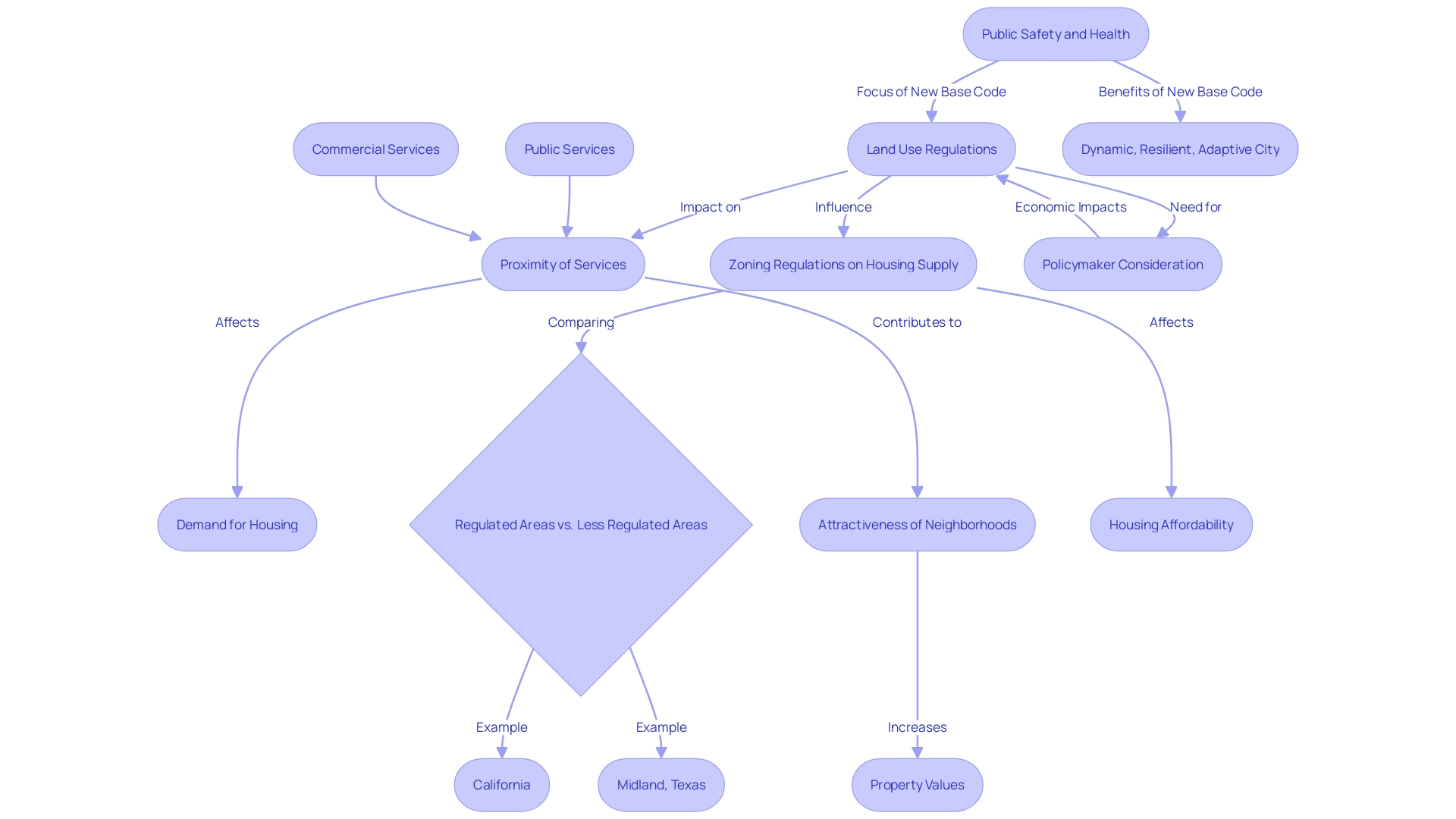
Negative Associations: Manufacturing Industry
Navigating the interface between heavy manufacturing industries and residential land use is a challenge that urban planners and policy-makers face. The Environmental Defense Fund's recent report highlights the significant impact that the proliferation of warehouses in New York State has on local residents. A staggering one in four residents, including vulnerable populations such as children under five and seniors over 64, live within the vicinity of large warehouses, exposing them to risks such as diesel pollution.
This pollution, as Dr. Christopher Carlsten points out, can lead to severe health issues like childhood asthma.
Despite the known risks, the National Environmental Policy Act and similar state laws, while originally designed to disclose environmental impacts, have been leveraged to substantially delay development projects. The resulting compliance costs and time delays can stifle the growth of industries that are crucial for the economic vitality of a region, as observed by Giles Gherson of the Toronto Region Board of Trade. Toronto, like many urban centers, is confronted with the dual challenge of housing shortages and a lack of space for industrial growth.
The industrial sector's complexity, with its varied subsectors, underscores the need for nuanced and tailored pollution reduction strategies, rather than a one-size-fits-all approach. This complexity is further exacerbated in the context of the broader U.S. economy, where nonmetro areas, historically reliant on industries like manufacturing, face greater employment challenges due to technological innovation and automation. As the economy shifts away from traditional industries and towards a knowledge-based economy, nonmetro areas must navigate these changes while balancing environmental concerns and the need for economic development.
Understanding the delicate balance between industrial development and maintaining the quality of life for residents is critical. It requires a multifaceted approach that considers the unique characteristics of each industry, the demographic impact of industrial proximity, and innovative zoning reforms to foster both residential well-being and economic growth. As urban areas continue to evolve, the integration of environmental health, industry needs, and residential rights will remain a key focus for sustainable urban planning.
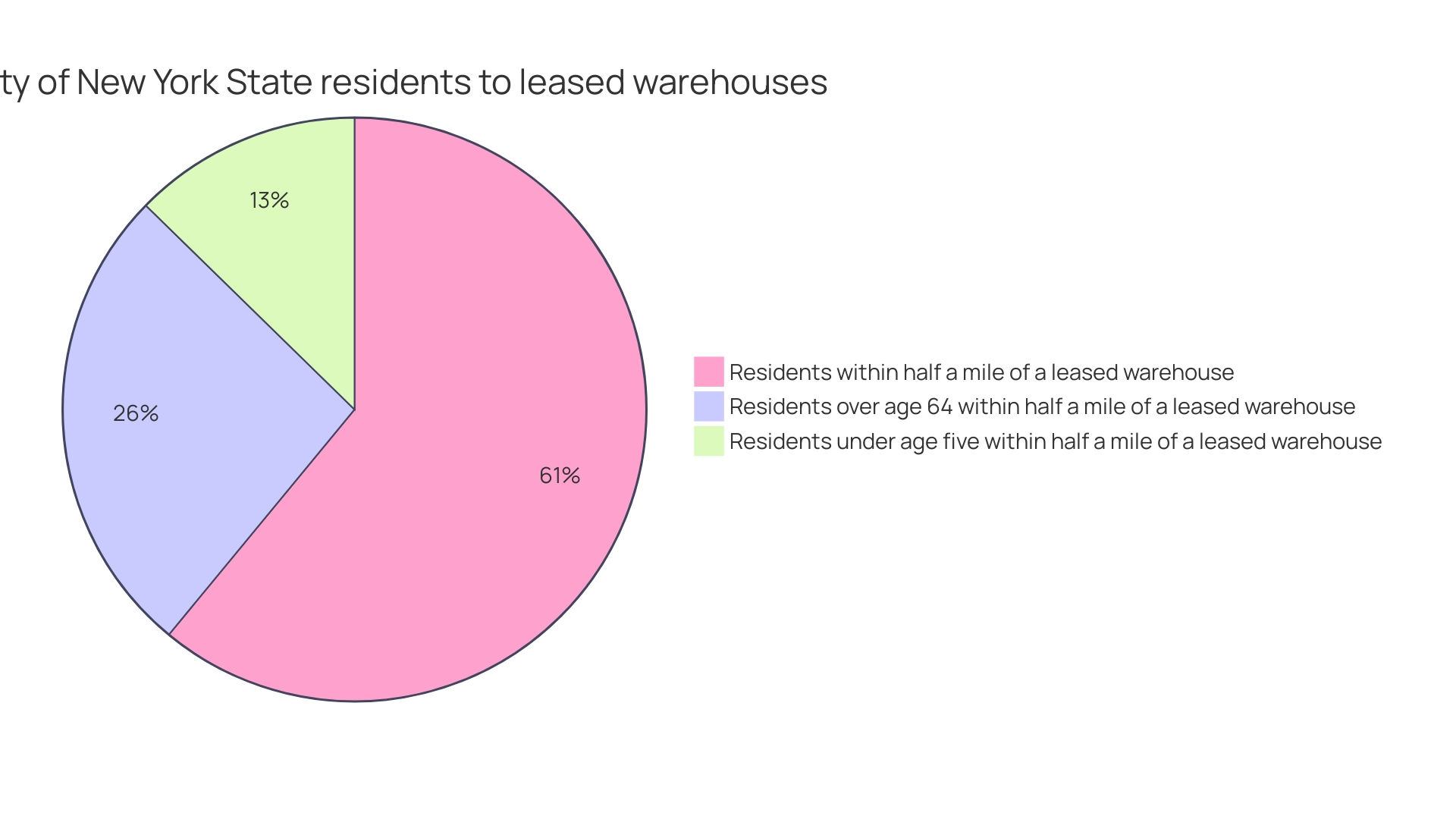
Spatial Heterogeneity: Suburban vs. Urban Areas
Residential zoning laws often vary significantly between suburban and urban areas, influencing the development patterns within these regions. For instance, suburban zones usually permit larger lot sizes and lower-density housing, providing residents with more space but potentially leading to urban sprawl and increased dependence on automobiles. Urban zones, in contrast, tend to enforce higher-density housing and mixed-use developments, fostering a more compact urban form that supports walkability and public transit use.
The National Zoning Atlas reveals that about 35 million people live in jurisdictions covered by the Atlas, representing only six percent of all U.S. local governments. A comprehensive understanding of zoning's impact across the nation's approximately 39,000 general-purpose local governments requires extensive research.
For example, recent zoning changes in St. Paul, Minnesota, mirror those in nearby Minneapolis, where the city's 2040 Comprehensive Plan authorized triplexes citywide. These reforms aim to increase density and housing options within traditionally single-family zones, tackling issues like housing affordability and urban equity.
In California, the debate over state interference with local zoning underscores the tension between municipal autonomy and statewide housing goals. SB 9, a law enabling more housing through lot splits, reflects a broader policy trend to address the state's housing shortage and affordability crisis.
Minimum lot size regulations are a ubiquitous aspect of U.S. zoning practices. Recognized as one of the most significant land-use statutes, these regulations influence housing affordability and urban development. The city of Dallas, for instance, often requires lots to be a minimum of 7,500 square feet, affecting the cost and availability of housing.
Houston's experience with lowering minimum-lot-size requirements showcases the potential for more inclusive and affordable development.
Zoning laws have historically been intertwined with issues of race and exclusivity, as noted in Cheryl L. Harris' concept of "whiteness as property." These laws have contributed to segregating communities and limiting access to certain neighborhoods, a legacy that continues to shape land-use policies.
The myriad of zoning approaches highlights the complexity of land use and the critical need for professionals to navigate these regulations effectively. A thorough understanding of zoning laws is not only vital for sustainable urban planning but also for addressing the underlying social and economic issues associated with land development.
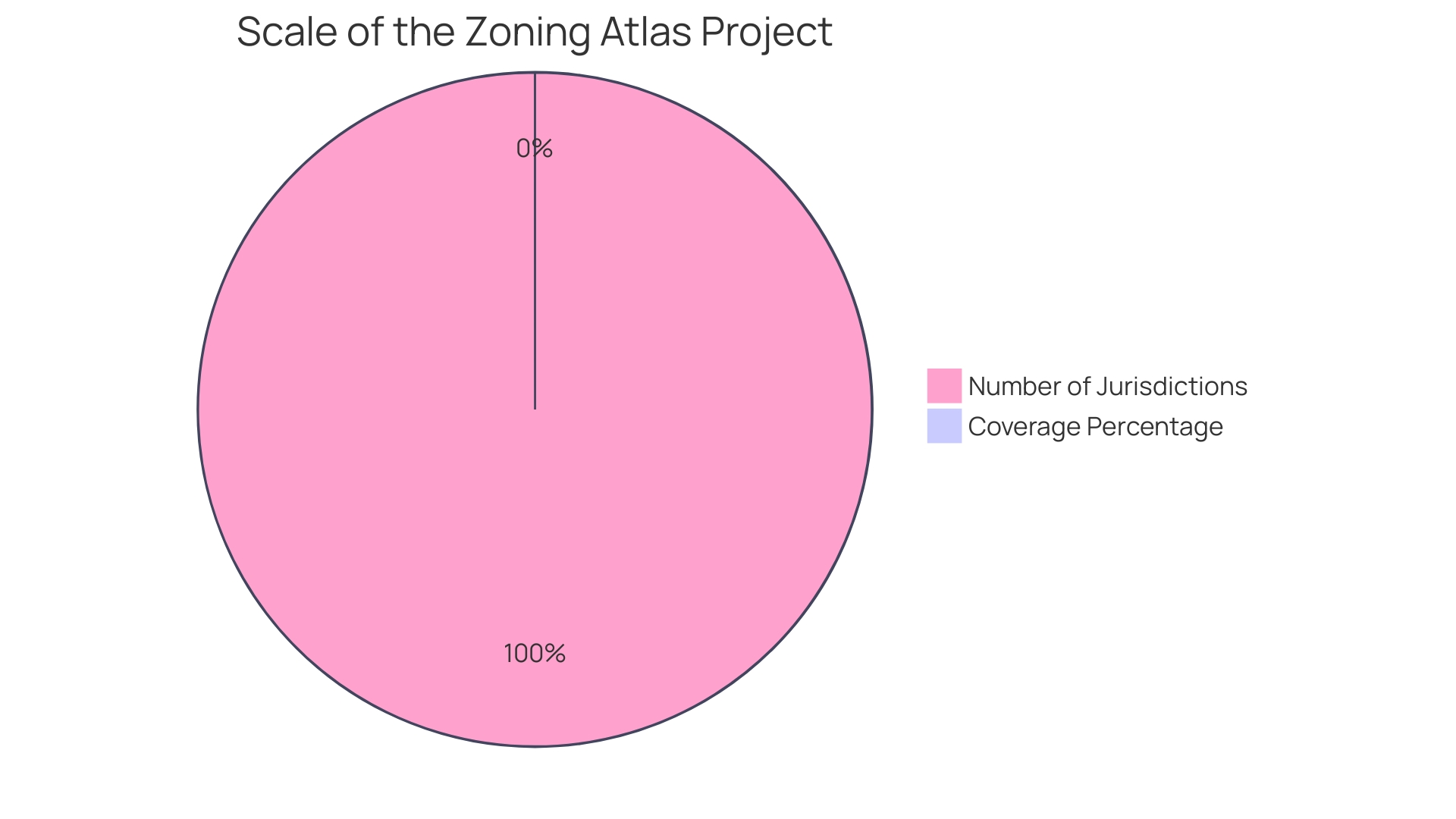
Temporal Heterogeneity: Changing Impacts Over Time
Residential land use regulations are dynamic, subject to the ebb and flow of changing societal needs and environmental conditions. The intricate dance between development and regulation is perhaps nowhere more evident than in the case of the National Environmental Policy Act (NEPA) and its state counterparts like CEQA. These laws, initially designed to encourage transparency about developmental impacts, have evolved into tools that can significantly delay projects by several years and add substantial compliance costs.
This dual-edged sword highlights the need for ongoing assessment to maintain the delicate balance between growth and sustainability.
The North American zoning system, distinct in its strict segregation of land uses, has far-reaching implications. It shapes the urban fabric and influences the character of communities. However, the case of Somerville, Massachusetts serves as a cautionary tale.
Despite its desirable attributes and high property values indicative of strong market demand, a zoning compliance study revealed that nearly all residential properties did not conform to existing zoning codes. This unexpected revelation underscored the complex interplay of regulations that may inadvertently stifle the organic growth of a city.
Moreover, the aftermath of Hurricane Ian, with damages upwards of USD $113 billion, emphasizes the critical need for strategic land use planning in the face of climate change. The challenges lie not only in identifying safe areas for development but also in considering economic realities and the inherent value that individuals place on certain locales, despite potential risks. The monumental task ahead is to inform and guide development that respects both human aspirations and environmental constraints.
Central to the discussion on land use is the recognition of property rights, including the fundamental rights to possess, use, exclude, and alienate. Historical analysis reveals that the 'Whiteness of property,' an evolution of Cheryl L. Harris' 'whiteness as property,' has been deeply embedded in zoning and land-use laws, perpetuating inequality. This legacy, traced from the 19th-century codification of the right to exclude through 20th-century zoning ordinances, continues to shape the landscape of racial and spatial justice.
In light of these multifaceted challenges and the historical context of land use and race, it is imperative for policymakers to remain vigilant, continuously evaluating the efficacy and fairness of regulations. Such diligence ensures that land use policies evolve constructively, reflecting the diverse needs of contemporary society while rectifying past injustices.
Methodology: Geographically and Temporally Weighted Regression Model
The dynamic nature of land use regulations and their influence on housing markets necessitates a nuanced analysis that considers both spatial and temporal variations. Utilizing a geographically and temporally weighted regression (GTWR) model, researchers have delved into the complexities of how these regulations impact property values, affordability, and overall quality of life. This methodological approach is critical in discerning the diverse effects that zoning laws and other regulatory measures exert on residential areas over time and across different locations.
In the context of California's vast landscape, encompassing 58 counties and hundreds of municipalities, the intricacies of single-family-only zoning have been mapped and studied extensively, revealing significant insights into the repercussions of restrictive zoning practices. Notably, Minneapolis has emerged as a case study where zoning reforms aimed at enhancing housing affordability and racial equity have led to noticeable changes in the housing market, prompting discussions around land use policy in other regions such as New York. The GTWR model's comprehensive outlook is particularly valuable in examining how these reforms translate into tangible outcomes in the real estate landscape.
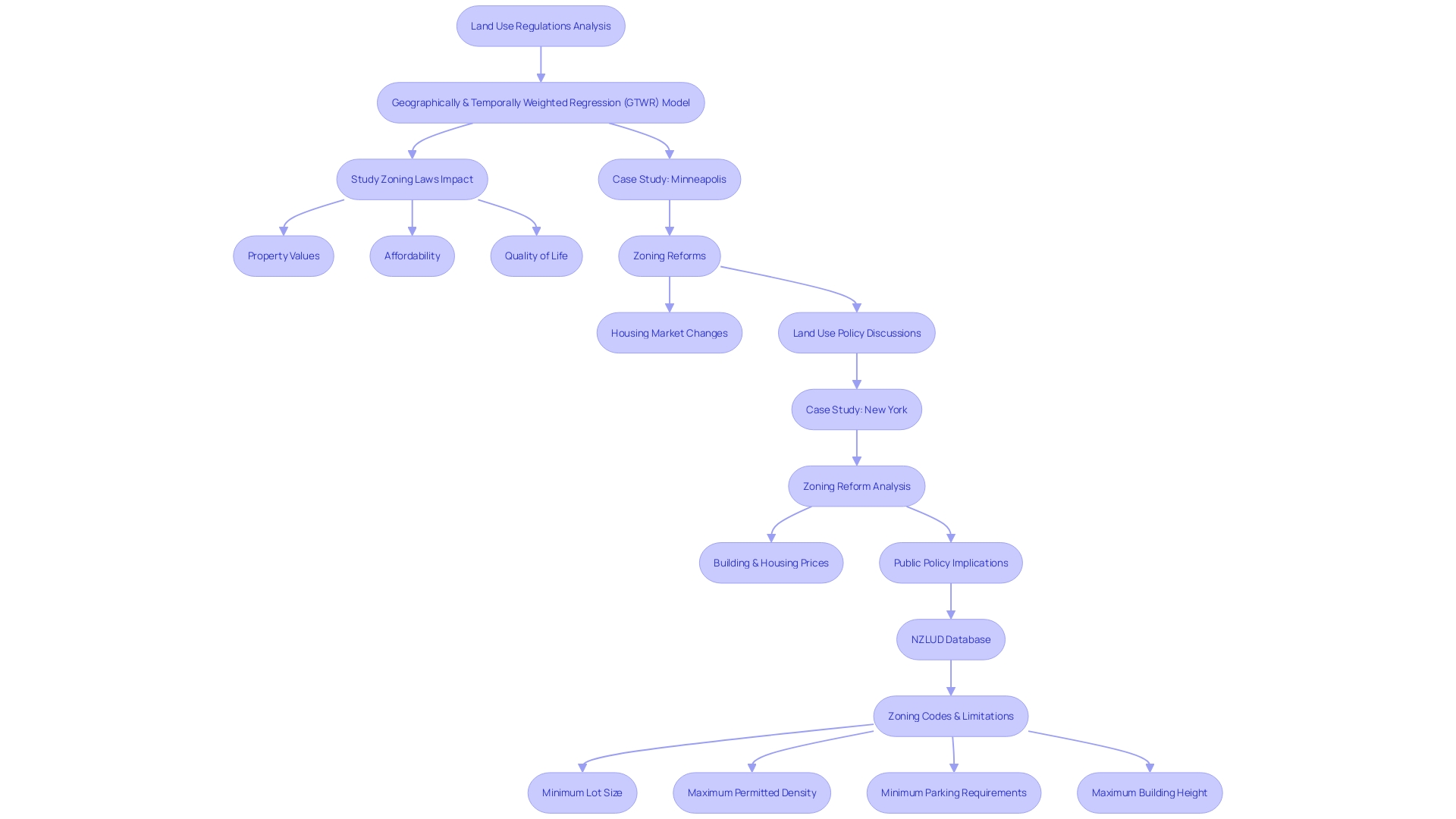
Findings and Implications
Exploring the dynamic balance between stringent land use regulations and economic flexibility has become increasingly relevant in the context of global environmental challenges. Findings from various international studies underscore the complex interplay between regulatory frameworks and economic growth. For example, research by Xie et al.
illustrates how environmental regulations, while potentially increasing production costs, can influence economic growth differently across regions. This spatial effect is critical for policy-making, especially when considering the environmental and economic disparities illuminated by India's high carbon emissions and the contrasting policy centralization observed in New Zealand.
In China, the dual management system of local environmental protection departments reflects a nuanced approach to governance, emphasizing both hierarchical oversight and lateral government collaboration. Such a system, with clear delineation of authority and decision-making, is vital for effective implementation of environmental management (EVM), as it directly impacts urban development and land use practices.
Recent advancements in remote sensing and geospatial analysis have enriched the discourse on urban land use patterns, allowing for a more comprehensive understanding of the implications of residential land use regulations. These technological developments have provided a wealth of spatial data, which, when coupled with ground monitoring, offer invaluable insights into the effects of land use decisions on air quality, as highlighted in recent European air pollution reports.
Moreover, the aftermath of natural disasters, such as Hurricane Ian's impact on the southeast United States, serves as a stark reminder of the risks associated with urban expansion in vulnerable areas. This has prompted a reevaluation of development strategies, further stressing the need for adaptable land use policies that can respond to evolving environmental and social conditions.
In light of these considerations, the Nanjing case study's findings are particularly instructive. They suggest that residential land use regulations, when thoughtfully designed, can enhance property values, housing affordability, and livability. However, the challenge lies in balancing regulation with the flexibility to adapt to changing socioeconomic circumstances, ensuring that policies remain effective over time and across different spatial contexts.
Additionally, the study underscores the significance of accounting for spatial and temporal heterogeneity, which is essential for the nuanced application and enforcement of land use regulations.
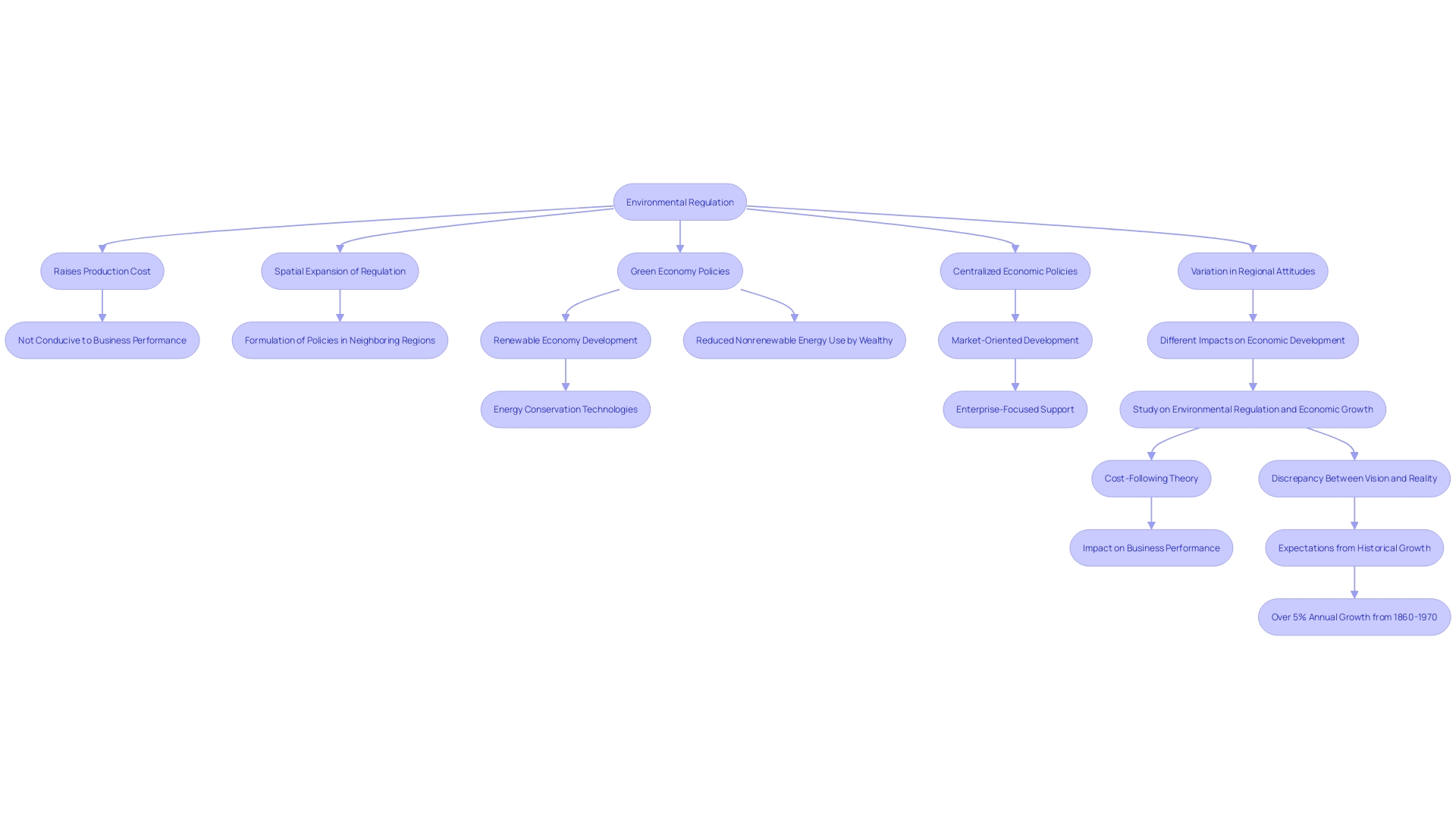
Future Research Directions
As we delve into the intricacies of residential land use regulations, it is evident that these rules significantly shape the landscape of our communities. The mosaic of regulations—ranging from density restrictions and setback requirements to design guidelines—plays a pivotal role in housing affordability, urban development, and overall community well-being.
In California, for example, a study of 519 jurisdictions with zoning authority revealed the profound impact of single-family-only zoning on residential development. Such restrictive zoning practices have been linked to exacerbating housing shortages and inflating prices. Reforms in Minneapolis, through the inclusion of voices often sidelined in land use discussions, have pioneered changes that challenge the status quo and aim to create more inclusive communities.
The importance of these regulations extends beyond social equity and shapes environmental outcomes. Urban sprawl, heavily influenced by land use decisions, contributes to one-third of global greenhouse gas emissions. This highlights the need for regulations that encourage compact, mixed-use communities, which offer numerous benefits, including reduced travel distances, increased housing affordability, and lower carbon footprints.
Moreover, economists and urban planners propose that relaxing zoning regulations could unlock housing potential and make it more accessible. Zurich, Switzerland, serves as an exemplary case where incremental upzoning has been implemented through democratic processes, carefully balancing the need for density with historical preservation.
Taking into account the complex interactions between land use and air quality, studies have underscored the significant health and economic implications. As researchers at the University of Minnesota point out, land use decisions have far-reaching effects on air quality, which, in turn, have profound impacts on human health and associated costs.
With these insights in mind, it is crucial for future research to dissect the myriad types of regulations and their respective outcomes across various urban contexts. This knowledge will empower policymakers to refine land use regulations in ways that foster sustainable, equitable, and thriving communities. The path forward involves a multi-faceted approach that considers the environmental, economic, and social dimensions of land use planning.
Conclusion
Zoning and land use regulations have a profound impact on urban landscapes and housing affordability. Recent zoning reforms in Minneapolis demonstrate a shift towards inclusivity and affordability, driven by advocacy for racial justice and environmental concerns. The case study of Nanjing, China, highlights the importance of mixed-use development in addressing challenges like congestion and pollution.
Residential land use regulations are influenced by factors such as demographics, economic climate, and community preferences. Minimum lot size requirements can impose financial burdens on buyers and homeowners. Compact, mixed-use developments promote sustainability and affordability.
The relationship between job availability, essential services, and land use policies significantly affects urban environments. Inclusive engagement in land use discussions can lead to zoning reforms that benefit housing affordability and the environment. Certain services, like producer and public or commercial services, are closely tied to land use rules.
Local regulations can impact housing supply and affordability, particularly for renters.
Balancing heavy manufacturing industries and residential land use poses challenges, with concerns about pollution and health risks. Tailored pollution reduction strategies are essential. Understanding the spatial and temporal heterogeneity of land use regulations is crucial for effective policy-making.
Land use regulations are dynamic and should be continuously assessed to balance growth and sustainability. Recognizing the historical context of land use and race is necessary for evaluating fairness and efficacy. The geographically and temporally weighted regression model provides valuable insights into the effects of regulations.
Future research should focus on dissecting different types of regulations across urban contexts, empowering policymakers to refine regulations for sustainable and thriving communities. By considering factors like demographics, economic climate, and community preferences, policymakers can create inclusive and affordable housing options while promoting sustainability.




